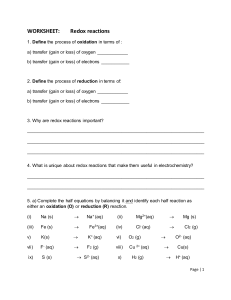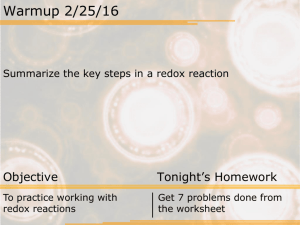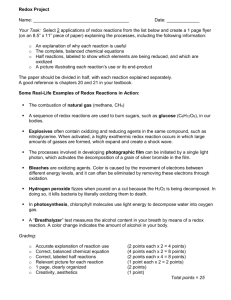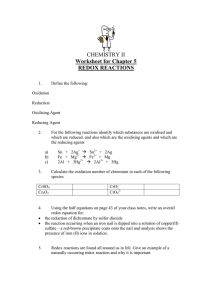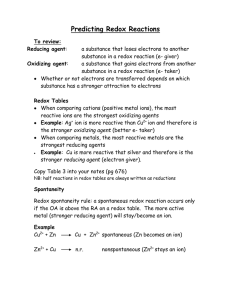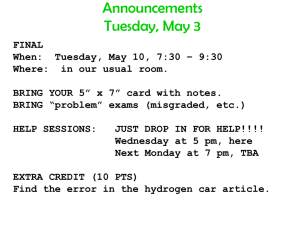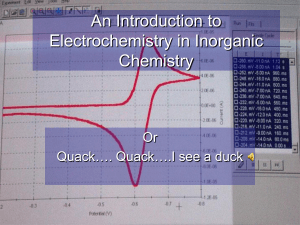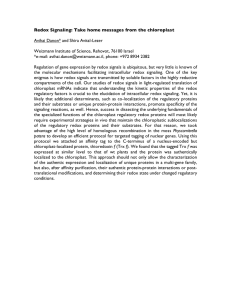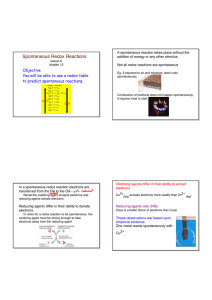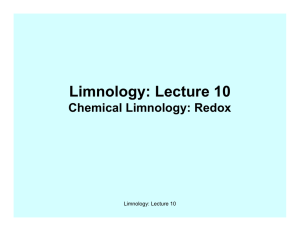march 18 CONCEPT: Reaction types: Redox TOOLS:
advertisement
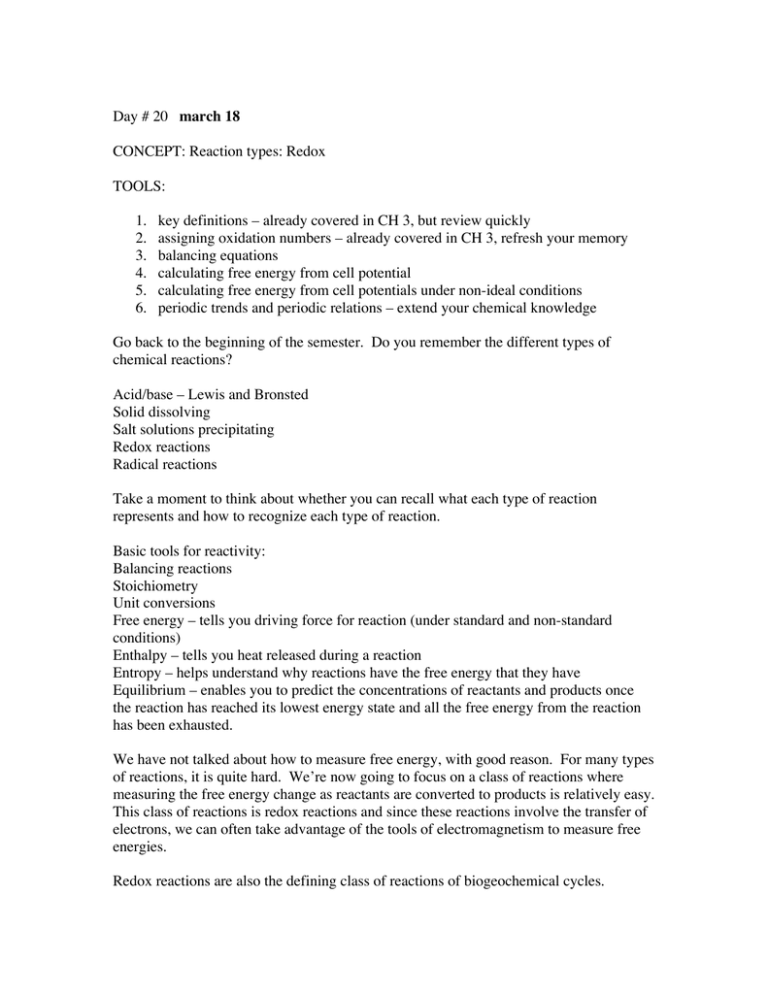
Day # 20 march 18 CONCEPT: Reaction types: Redox TOOLS: 1. 2. 3. 4. 5. 6. key definitions – already covered in CH 3, but review quickly assigning oxidation numbers – already covered in CH 3, refresh your memory balancing equations calculating free energy from cell potential calculating free energy from cell potentials under non-ideal conditions periodic trends and periodic relations – extend your chemical knowledge Go back to the beginning of the semester. Do you remember the different types of chemical reactions? Acid/base – Lewis and Bronsted Solid dissolving Salt solutions precipitating Redox reactions Radical reactions Take a moment to think about whether you can recall what each type of reaction represents and how to recognize each type of reaction. Basic tools for reactivity: Balancing reactions Stoichiometry Unit conversions Free energy – tells you driving force for reaction (under standard and non-standard conditions) Enthalpy – tells you heat released during a reaction Entropy – helps understand why reactions have the free energy that they have Equilibrium – enables you to predict the concentrations of reactants and products once the reaction has reached its lowest energy state and all the free energy from the reaction has been exhausted. We have not talked about how to measure free energy, with good reason. For many types of reactions, it is quite hard. We’re now going to focus on a class of reactions where measuring the free energy change as reactants are converted to products is relatively easy. This class of reactions is redox reactions and since these reactions involve the transfer of electrons, we can often take advantage of the tools of electromagnetism to measure free energies. Redox reactions are also the defining class of reactions of biogeochemical cycles. Put up the sulfur cycle and define key terms Example of important sulfur reaction: Metals too tend to undergo spontaneous reactions with acids: Bring in some Ca, Zn, Mg, Cu and acid. Begin by reviewing how to balance redox reactions H+ + Zn Zn2+ + H2 1. 2. 3. 4. 5. 6. 7. identify each half reaction balance all atoms except O and H balance Os with water balance H with H+ if in base, add OH- to both sides to neutralize H+ id number of electrons involved in each half reaction multiply by appropriate coefficients so that both half reactions have same number of electrons 8. combine half reactions back together 9. check work. A few more examples. Work problems 17: 3, 4, 5, 6, 7 in text
